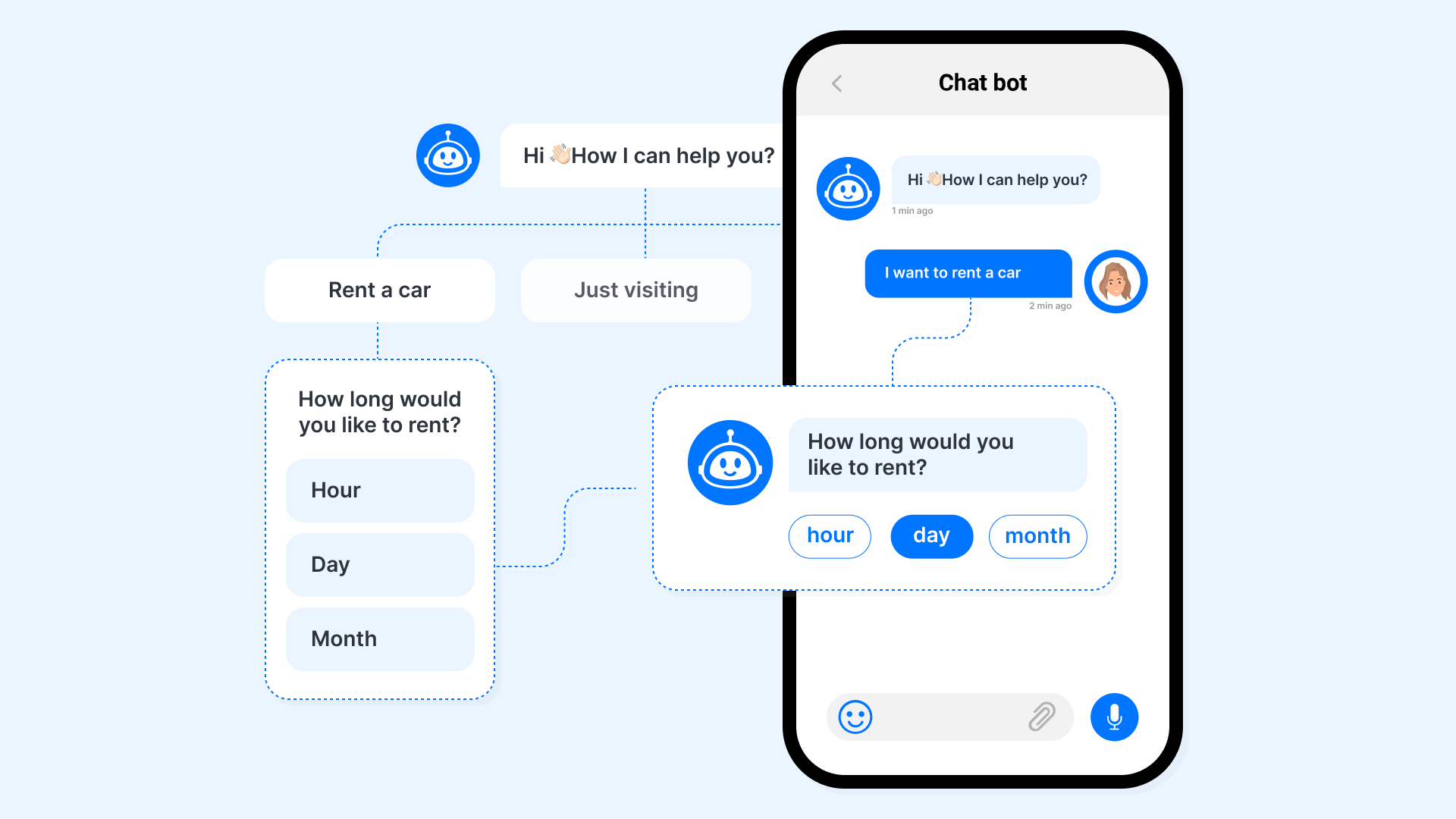Maximizing Sales with Chatbots in E-commerce: Understanding, Benefits, and Techniques
Chatbots are artificial intelligence-powered programs designed to simulate conversations with human users. They have become increasingly popular in the world of e-commerce as they offer a convenient way for businesses to interact with their customers. Chatbots can provide quick and accurate answers to customer queries, perform routine tasks, and even make recommendations. With the rise of messaging platforms and advancements in natural language processing, chatbots are now capable of providing personalized experiences for customers. In this article, we will take a closer look at the definition and types of chatbots, their benefits to e-commerce sites, and how to increase sales with a chatbot.
What’s Chatbot?
Chatbots are computer programs designed to mimic human conversation through text or voice interactions. They use natural language processing (NLP) and machine learning algorithms to understand and respond to customer queries, requests, and commands. Chatbots can be integrated into websites, mobile applications, and messaging platforms to provide 24/7 support and assistance to customers. They are capable of handling a wide range of tasks, from answering frequently asked questions to process orders and providing personalized recommendations. With their ability to automate routine tasks, chatbots have become an essential tool for businesses looking to improve customer experience and increase efficiency.
What kinds of chatbots are there?
It is difficult to establish uniform criteria for defining the different sorts of chatbots due to the fact that there are numerous chatbots in use today. When classifying different kinds of chatbots, one may often depend on the underlying technology or the applications they were designed for.
1. Chatbot models based on technology
Chatbots can be classified based on technology into two main categories: text-based and AI-powered.
- Text-based chatbots, also known as rule-based chatbots, use a set of pre-determined rules and keywords to respond to customer queries. These chatbots are typically limited in their capabilities and can only provide the basic information or perform simple tasks.
- AI-powered chatbots, on the other hand, use natural language processing (NLP) and machine learning algorithms to understand customer requests and provide relevant responses. These chatbots are more advanced and can handle a wider range of tasks, such as providing personalized recommendations or processing orders. AI-powered chatbots can also improve over time as they learn from customer interactions and feedback.

2. Chatbot models based on user needs
Some chatbots are designed to cater to specific needs in order to cater to a specific clientele in a well-defined sector. These chatbots include:
- Customer service chatbots interact with customers in real-time to provide answers and support.
- Support chatbots assist customers by providing information and resolving issues.
- Marketing chatbots are used for various marketing activities such as promoting products and services.
- Social media chatbots are integrated into social media platforms to engage with customers and provide information.
- Internal chatbots are used within a company to automate internal processes and improve communication.
The benefits of chatbots in eCommerce
Chatbots bring numerous benefits to e-commerce websites, including:
- Improved Customer Service: Chatbots are available 24/7 to provide instant support and answers to customer inquiries, reducing wait time and improving overall customer satisfaction.
- Personalized Shopping Experience: Chatbots can collect data on customer preferences and behavior to offer personalized recommendations and promotions, enhancing the shopping experience.
- Increased Sales and Conversion Rates: By offering real-time assistance and simplifying the checkout process, chatbots can increase sales and improve conversion rates.
- Cost Savings: Chatbots can handle a large volume of customer inquiries, reducing the need for human customer service representatives and ultimately saving on labor costs.
- Increased Efficiency: Chatbots automate repetitive tasks and can handle multiple customer interactions simultaneously, freeing up staff time for more complex tasks and increasing overall efficiency.
- Better Data Collection: Chatbots can collect data on customer behavior and preferences, providing valuable insights for businesses to improve their products and services.
Overall, chatbots offer a unique opportunity for e-commerce websites to enhance the customer experience, increase sales, and streamline operations.
Read more: 5 Reasons to add a Chatbot to your Shopify store
How to increase sales with eCommerce chatbots
Enhancing sales is a crucial aspect of any business and one way to achieve that is by providing top-notch customer support throughout the purchasing process. However, it becomes challenging to offer personal assistance to every single customer, especially during peak times. That’s where chatbots come into play. By setting up chatbots that support customers in their buying journey, businesses can optimize their sales and provide an efficient customer experience.
1. Upon arrival on the website
As your potential customer reaches one of your landing pages, the chatbot can be doubly useful:
- It can send a welcome message to the visitor to initiate the conversation
- It can guide the visitor to a specific page based on their request.
This can have a positive impact on your bounce rate: people arriving on a new website sometimes feel a little lost, which can prompt them to leave immediately. By welcoming and guiding them, you minimize this risk.
2. During Product Search
As an e-commerce merchant, you should be familiar with the concept of cart abandonment. While it is possible to re-engage customers who leave the site before paying, the ideal solution is to prevent it from happening in the first place to reduce the phenomenon.
And a chatbot can help you achieve this:
- First, by making product suggestions based on the customer’s needs
- But also by promoting certain products or offering discounts to drive conversions
3. The search for reviews and advice
Once a product catches the eye of your customer, they will likely look for additional information to confirm their choice.
Again, the chatbot is involved:
- It can answer simple questions the visitor may have in a standardized way
- It can redirect the customer to a competent person (customer service representative) in case of a more complex request
Now the way is clear for your customer to make a purchase.
4. After the purchase
Once the payment is confirmed, your work is not over: getting feedback from your customers is very important, not only to improve but also to display positive reviews on your products – online buyers rely heavily on them.
Chatbots can be a valuable tool in increasing sales for e-commerce businesses. They can provide efficient customer support and improve the customer experience throughout the buying journey. From welcoming and guiding visitors on the website, making product suggestions, answering simple questions, redirecting to a customer service representative for complex requests, and collecting customer feedback, chatbots can play a significant role in boosting sales.
Read more: 10 Powerful Chatbot apps for Shopify
What’s next for chatbots in e-commerce?
The future of chatbots in the e-commerce industry looks promising as technology continues to advance. With increasing consumer demand for quick and convenient shopping experiences, chatbots will likely play a larger role in providing seamless and personalized interactions for customers. This may involve the integration of advanced technologies such as artificial intelligence, machine learning, and natural language processing to enhance the capabilities of chatbots and make them even more effective in assisting customers and facilitating sales. Additionally, chatbots can be expected to become increasingly integrated with other e-commerce platforms and tools, allowing for even more streamlined shopping experiences. Overall, the future of chatbots in e-commerce appears bright and will likely play a significant role in shaping the industry for years to come.
Conclusion
In conclusion, chatbots have revolutionized the way businesses interact with their customers. With their ability to provide instant support and information, chatbots have proven to be invaluable tools for e-commerce websites. The integration of AI technology has further enhanced their capabilities, making them more intuitive and effective in meeting the needs of customers. As technology continues to advance, the future of chatbots in e-commerce looks promising. They are likely to become an integral part of the customer experience and play a significant role in the success of e-commerce businesses. It’s exciting to see how chatbots will continue to evolve and bring new opportunities for companies to better serve their customers.








